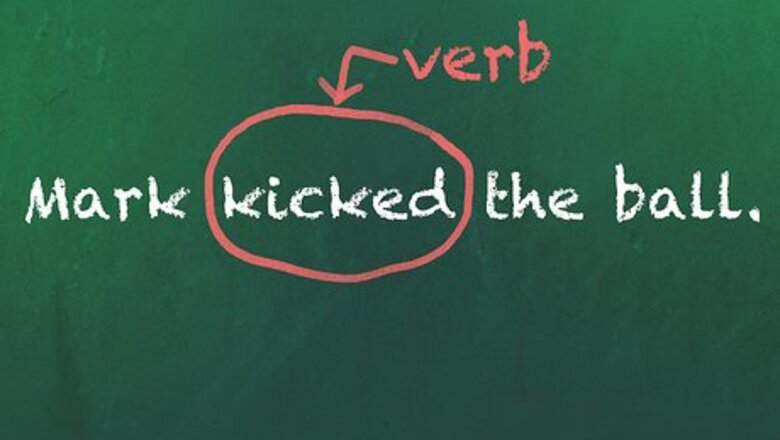
views
Identifying the Different Parts of a Sentence
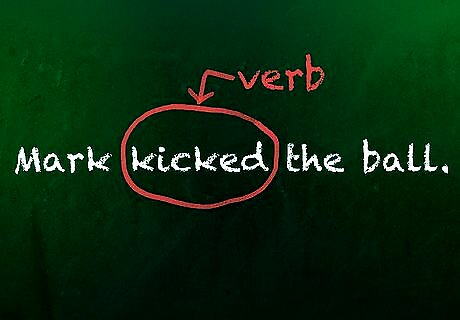
Identify the verb in the sentence. To avoid using passive voice and start using active voice, start by figuring out the verb in the sentence. This will make it a lot easier to spot passive voice in your own writing and avoid it. The verb is the action word in the sentence, and it can be either active or passive. Most verbs are active, like kicked or graded, but the verb phrase "to be" and its conjugations (is, was) are passive. For example, the sentence: Mark kicked the ball. The verb in the sentence is kicked. In this sentence it's past tense. It's the action. The act of kicking. The ball is passive because it's not doing anything; it's just being kicked.
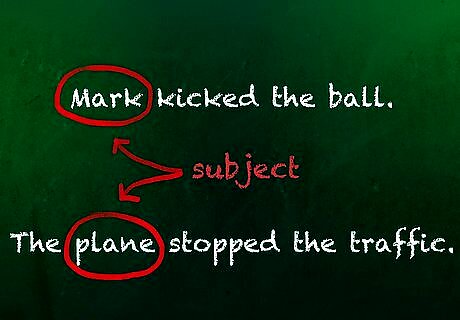
Identify the subject in the sentence. The next step is to isolate the subject in your sentence. Start by figuring out the verb, the action, because this will make it easier to find the subject. The subject of the sentence in the active voice is who or what did the action. Let's go back to our example sentence: Mark kicked the ball. Kicked, as we have already established, is the verb. Ask yourself, who or what did the kicking? Answer: Mark. That's how you determine the subject in the active voice. Recognize that sometimes the subject is not a person. Example: The plane stopped the traffic. The action, and thus, the verb, is the act of stopping. Who or what did the stopping? The plane. Thus, the plane is the subject of the sentence.
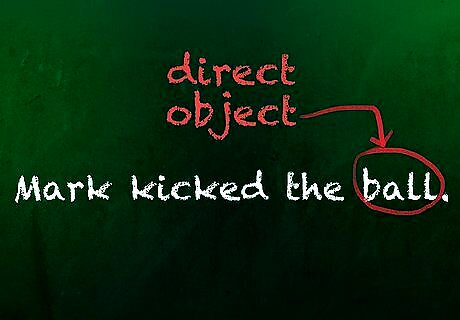
Identify the direct object in the sentence. Not all sentences have direct objects. The direct object is the object of the verb. It's not the action. It's not doing the action. It's being acted upon. In the example, Mark kicked the ball, the word ball is the direct object. The ball isn't active. It's not the catalyst for movement. It's being acted upon. It's the direct object. Sometimes, people eliminate the direct object and just write something like, Mark kicked. Sometimes in the passive voice, the previous direct object becomes the subject: The ball was kicked.
Determining Active Versus Passive Voice
Make sure that the subject is doing the action. In order to create active voice, you need to make sure that the subject is acting, that is the subject in the one doing the verb. We've established that the verb is the action word in the sentence. Make sure the “who or what did the action” is actually performing the action. The dog wagged its tail is active voice. That's because the act of wagging is the verb. Who or what did the wagging? The dog. The dog in the sentence is performing the verb, wagging. Thus, the sentence is in active voice.
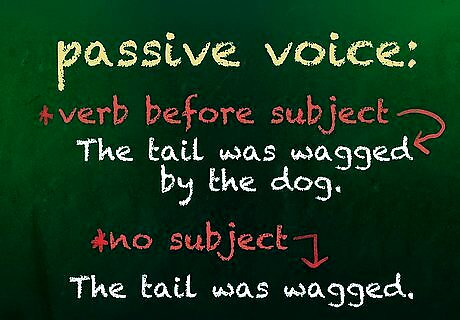
Spot passive voice. Passive voice involves making a compound verb by using the phrase “to be” or any of its conjugations. A sentence is also in the passive voice if the thing that is doing the verb is preceded by the prepositional phrase "by the" or "by a", or the thing doing the action may be completely eliminated. For example, The tail was wagged by the dog is passive voice. This is because the tail, the subject, is being acted upon by the verb. Sometimes people eliminate the prepositional phrase describing who the action was being done by, and write a sentence like: The tail was wagged. This is often done to eliminate responsibility or when people don't know who did the action.
Knowing When to Use Passive Voice
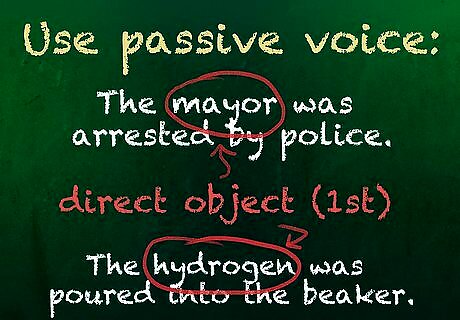
Determine whether the direct object is most important. There can be rare exceptions where you would want to use passive voice; passive voice is not a grammatical error. However, this is the bottom line: It should not be the default choice. It should only be used when there is a strong logical reason to use it. Let's say you're a news writer. The mayor was arrested by the police. Active voice would be: The police arrested the mayor. The more important point in the sentence is to announce that the mayor, a very prominent person, was arrested! Thus, in this case, it's logical to write instead: The mayor was arrested by police. Similarly, in science, it might make more sense to put the object first, not the process. Instead of writing, I poured the hydrogen into the beaker, you might write, the hydrogen was poured into the beaker. Generally speaking, though, active voice is better because it's tighter and punchier writing. It's more dramatic, and it puts responsibility where it belongs.

Look at your spell-check. If you are using Microsoft Word, the spelling and grammar checking device, if set to check grammar, will notify you if the sentence is passive and correct it for you. Get in the habit of re-reading and checking over all your work. Look at each sentence individually. Don't be afraid to ask for help. Ask an English teacher or professor to explain the difference between the active and passive voices. Get a grammatically-adept friend to help you look over your work. Don't be afraid to let others help you!
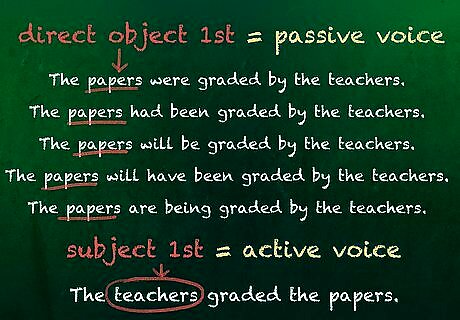
Pay attention to subject position most. Sometimes people get confused because the sentence's tense varies. The papers were graded by the teachers is passive voice (technically it's just called past tense.) The papers had been graded by the teachers is also passive (it's called past perfect). Look for “to be” or its conjugations to determine passive voice. The papers will be graded by the teachers is passive (it's future tense). The papers will have been graded by the teachers is also passive (it's future perfect). The papers are being graded by the teachers is present progressive tense and also passive. Again, the key point is that all of these sentences are passive because the direct object (papers) is in front of the verb, and the subject (who did the action) is located after the verb. The active voice version of this sentence is: The teachers graded the papers.




















Comments
0 comment